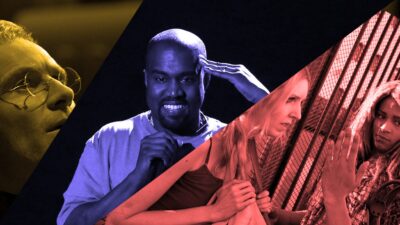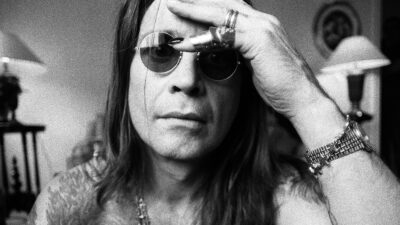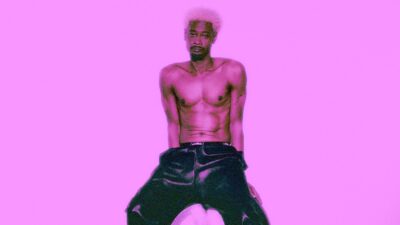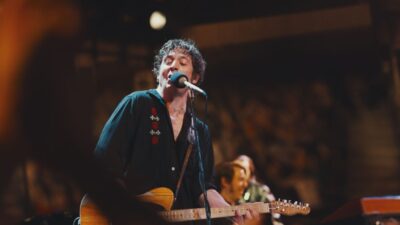Dead serious, no bullshit, no hyperbole intended. For all intents and purposes, let’s consider this a sequel to Merry-Go-Round’s selection of Danny Brown as our Artist of the Decade for the 2010s (full disclosure, I voted for him). There’s no need for me to relitigate the circumstances of Brown’s career breakthrough with XXX, nor the factors that have made him one of the protagonists of music over the last 15-odd years when the good CJ Simonson has already done so more than capably for this very publication.
That being said, in order to lay out the GOAT case for our favorite Detroit product since the Hot-N-Ready Pizza, we do need to revisit some of the history that got us to this last weekend, and discuss the complete artistic history of the man in question.
—
The first time I ever heard a Danny Brown song, I was 12 years old.
My brother had downloaded a mixtape from Datpiff called HOT SOUP and wanted to show it to me, saying—to his eternal credit—“If Danny Brown ever gets big, I called it.” We listened to “What up Doe,” and in the nascent adolescent year 2009, it almost immediately rewired my brain chemistry. Even today it sounds like nothing else, the production starkly minimal, consisting of some simple syncopated drums and a quiet, low bass drone accompanied by exactly two notes of melody, a single descending major fifth that recurs just once every four bars. The song sounds spare and sinister in a way that was foreign to my ears back then, fully centering Danny’s trademark astringent voice, unmistakable from the beginning. More importantly than any of that though, he was rapping his goddamn ass off. You can almost hear the flecks of spit flying into the microphone as he lays down the flow, conjuring outrageous turns of phrase that no other MC would ever dream up—name another rapper who would come straight at your throat with, “Smoke green like I shot a Ninja Turtle.”
The rest, as they say, is history. THE HYBRID quickly followed and caught the attention of Fool’s Gold Records, which led to the release of XXX and a true critical and commercial breakthrough for Brown via an album that very explicitly grappled with his self-destructive tendencies and feelings that he was nearing the end of his rope having never really “made it” in the music industry at the age of 30. I still know all the words to “Die Like a Rockstar,” a live show staple that never fails to set off the mosh pit, so beloved by fans today that it’s easy to forget there wasn’t much irony involved when he initially wrote the song. Fortunately, we don’t live in that song’s timeline, and Danny lived on to give us OLD in 2013, an album split into two distinct halves, the latter half dedicated to ragers and party songs, the former comprised of frank, no-holds-barred accounts of growing up in the ghetto that Danny mostly raps in his subdued lower register as opposed to his more typical unhinged cadence. In case any hard evidence is required to prove that Danny has always been miles ahead of every curve, you’ll find a Charli XCX feature on this album over a decade before any BRAT Summers came around.
2016 begat ATROCITY EXHIBITION, Brown’s masterpiece (in this writer’s opinion) and a record for which it remains impossible to find any analogue, frequently behaving more like post-punk or no wave than hip hop and featuring some of the most nakedly harrowing lyrics ever put to tape in any genre. Danny has gone on record in the years since ATROCITY that he went into personal debt making the album, paying for sample clearances out of his own pocket once his budget was exhausted, and the album perfectly reflects both his uncompromising commitment to his artistic vision and the utter desperation of a man still ceaselessly striving to prove to his peers that he belonged in conversation with the best, despite the self-evident fact that he had already earned their respect (Kendrick Lamar and Earl Sweatshirt both contributed features to the same song on the album, the titanic posse cut “Really Doe”). Therefore, it came as something of a relief to see Danny chill out a little on the next record, 2019’s UKNOWHATIMSAYIN? Working under the executive production of the legendary Q-Tip, Brown “almost had to relearn how to rap again,” getting back to the basics of the form to put together some of his most dynamic rhyme schemes and flows to date. He also referred to the record as a stand-up comedy record, fully leaning into one of his greatest strengths as a writer: his sense of humor.
(Aside: Danny Brown is one of the funniest guys around, not just in music but in general. I was present at one of his very first post-COVID gigs at Pitchfork Music Festival in 2021, where he openly admitted to having forgotten most of his own lyrics after not rapping live for over a year, and proceeded to just do an actual stand-up comedy bit about his air fryer for, like, five full minutes of his hour-long set. He has since branched out into the podcast space with THE DANNY BROWN SHOW, wherein he dishes out some of the worst life advice you’ve ever heard and gives brutally honest reviews of listener-submitted freestyle raps. He is routinely the funniest guy on the show despite many of his guests being professional comedians—the episodes with guests who can go toe-to-toe with Danny in this respect are incredible viewing. I highly recommend any of the episodes he’s done with the always-hilarious Zack Fox.)
—
So this brings us to the end of the 2010s. What’s our guy been up to since then? For several years, as a recording artist, not much. Danny turned his attention back to Detroit and its talent, firing up his own imprint in Bruiser Brigade Records. Focusing his efforts entirely on the projects of his friends and proteges on the label, every single one of the five Bruiser Brigade artists not named Danny Brown dropped a full-length album in 2021, each one boasting at least one Danny Brown feature. It’s one thing for Brown to have influenced other artists with his boundary-pushing music, but it’s another to directly leverage his hard-earned industry knowledge and cultural cache to lift up exciting young talent from his hometown. Not only does it represent a deft paying-forward of fortune from a guy who was never guaranteed to make it, but it also shows off Brown’s sharp eye for unique artists, from the brisk, conversational flow of Bruiser Wolf to the technicolor hallucinations of ZelooperZ, none of the Bruiser Brigade cadre can possibly be mistaken for anybody else.
The two most recent records under Danny Brown’s name are both from 2023, the JPEGMAFIA collab album SCARING THE HOES and his long-awaited pseudo-sequel to XXX, titled QUARANTA (the number 40 in Italian, mirroring XXX’s 30 in Roman numerals). Danny might be the sole person that can hang for an entire record with Peggy, as it’s hard to imagine anyone else having the sheer verve to match the madcap energy of either man; QUARANTA, meanwhile, stands out in a different way. Even in a discography never lacking for raps about addiction, twisted psychology, and self-destruction, something about QUARANTA felt particularly stark, the sound of a man reaching middle age who was truly running out of gas as the lifestyle continued to take its toll.
—
Through all the various left turns of Danny Brown’s career, he’s always been a true artist’s artist, somebody whose moves have never felt calculated or predictable. Which makes it all the more incredible that he somehow figured out a way to throw the biggest curveball of his career to date: He got sober and made a pop rap album.
Of course, things are never so straightforward with Danny Brown as just making a pop rap album. Structurally and functionally a pop rap album is exactly what STARDUST is, a collection of songs with hooks and choruses contributed by a coterie of featured pop artists, Brown’s rap verses the common element to each track. However, Brown’s selected collaborators are predictably unusual, consisting predominantly of artists aged 25 or younger and traversing a range of styles that largely fall under the umbrella of so-called “hyperpop” and competing strains thereof. That group also notably, especially for a hip hop record, includes numerous artists of transgender identity, a powerful and intentional platforming of trans art at a moment of extreme duress for the community—fentanyl and underscores are joining Brown for the duration of his ongoing U.S. tour as well. Brown has been very open about how the work of these artists has profoundly impacted him during his journey of sobriety, and in his own words, helped him “fall back in love with music again.” A veteran artist of Danny Brown’s stature and caliber so earnestly professing admiration for much younger, up-and-coming musicians in a totally different genre from his own is heartwarming, but devoting an entire album cycle to the project of directly collaborating with those same musicians is an astonishing leap of faith.
Oh brother, do they ever stick the landing. From the opening chords of “Book of Daniel,” it’s immediately clear that you’ve never heard a rap album like STARDUST. With a major assist from YouTube rapper-turned-folktronica shaman Quadeca, Danny sounds more confident and assured than we’ve maybe ever heard him, backed by a genuinely epic instrumental that starts triumphant and ends rapturous. In utter command throughout, Brown reminds us that his range as a rapper is effectively limitless; there is no beat or song he cannot convincingly flow on. The Quadeca instrumental quickly gives way to a succession of cutting-edge productions, ranging from songs that will be stuck in your head for days (“Copycats,” “Flowers”) to beats so glitchy that they might be rhythmless if Danny wasn’t there providing a vocal pulse (post-beat switch “Starburst,” “1999”). “Lift You Up” starts off as a Honey-era Robyn instrumental before exploding into a ‘90s jock jam over which Danny flows like a VHS pilates instructor. The second underscores cut “Baby” is the closest thing here to straight Charli XCX pastiche, all the way down to Danny himself doing an affected breathy voice for the hook. Meanwhile, the fentanyl song “1L0v3myL1f3!” sounds awfully close to later-period Death Grips, complete with a Zach Hill-style breakbeat and chopped-up Steve Albini vocal samples (rest easy legend). Significant portions of “The End,” the longest track of Brown’s career, are straight up performed in Ukrainian and Polish by Warsaw artist ta Ukrainka, who apparently got on the album by cold DMing Brown on Instagram with a link to one of her songs.
This dizzying array of sounds and styles from such a carefully curated and forward-thinking batch of musicians alongside one of the defining rappers of a generation is, very simply, an absolute treat to listen to. As an unapologetic embrace of left-field music, not every song on STARDUST is going to resonate with everybody, and I’d be lying if I said I don’t already have favorites of my own, but it coheres so incredibly well as a whole and teems with so much creativity and radiant energy that it’s difficult to tune out from no matter where you are in the tracklist. To me, 15 years in and halfway through his 40s, for Danny Brown to still be finding ways to surprise us and push us as listeners makes him a legitimate claimant to the title of Greatest, whatever that means to you. Runs this long and artistically rich are damn near impossible to come by in rap music and every other kind of music, rarefied if not sanctified air.
As we wrote five years ago on this site: “Throughout a decade that became harder and harder to find someone or something to root for, rooting for Danny Brown always felt right.” I’m beyond thrilled to report that some things haven’t changed.
















Comments